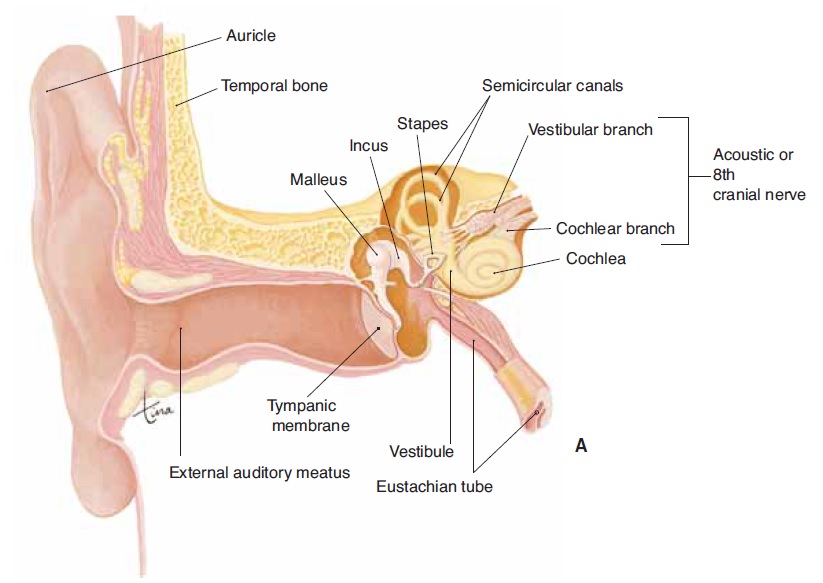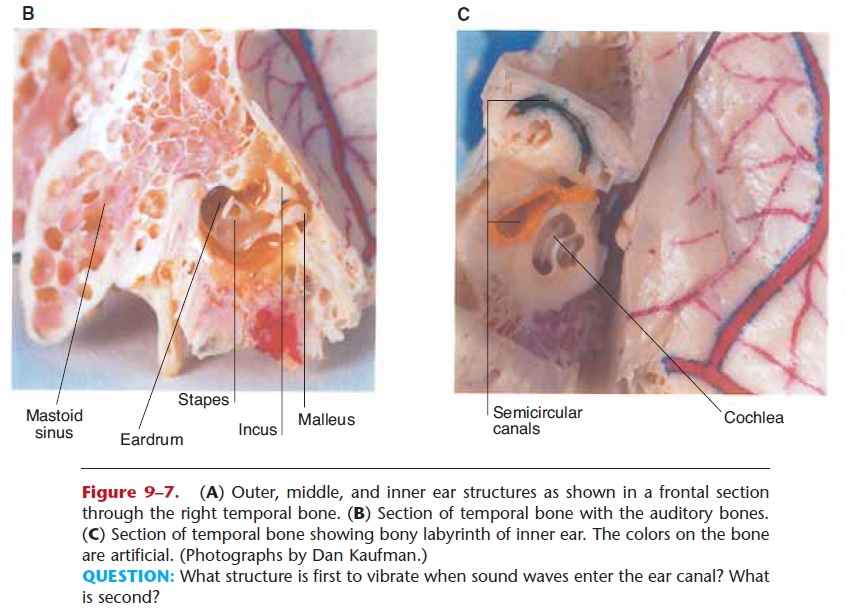Chapter: Essentials of Anatomy and Physiology: The Senses
Arterial Receptors
ARTERIAL RECEPTORS
The aorta and carotid arteries contain receptors that detect changes in the blood. The aortic arch, which receives blood pumped by the left ventricle of the heart, curves over the top of the heart. The left and right carotid arteries are branches of the aortic arch that take blood through the neck on the way to the brain. In each of these vessels are pressoreceptors and chemoreceptors (see Fig. 12–7).


Pressoreceptors in the carotid sinuses and aortic sinus detect changes in blood pressure. Chemorecep-tors in the carotid bodies and the aortic body detect changes in the oxygen and carbon dioxide content and the pH of blood. The impulses generated by these receptors do not give rise to sensations that we feel but rather are information used to make any necessary changes in respiration or circulation.
If the blood level of oxygen decreases significantly, this change (hypoxia) is detected by carotid and aortic chemoreceptors. The sensory impulses are carried by the glossopharyngeal (9th cranial) and vagus (10th cranial) nerves to the medulla. Centers in the medulla may then increase the respiratory rate and the heart rate to obtain and circulate more oxygen. These are the respiratory and cardiac reflexes that were mentioned as functions of the glossopha-ryngeal and vagus nerves. The importance of these reflexes is readily apparent: to maintain normal blood levels of oxygen and carbon dioxide and to maintain normal blood pressure.
Related Topics